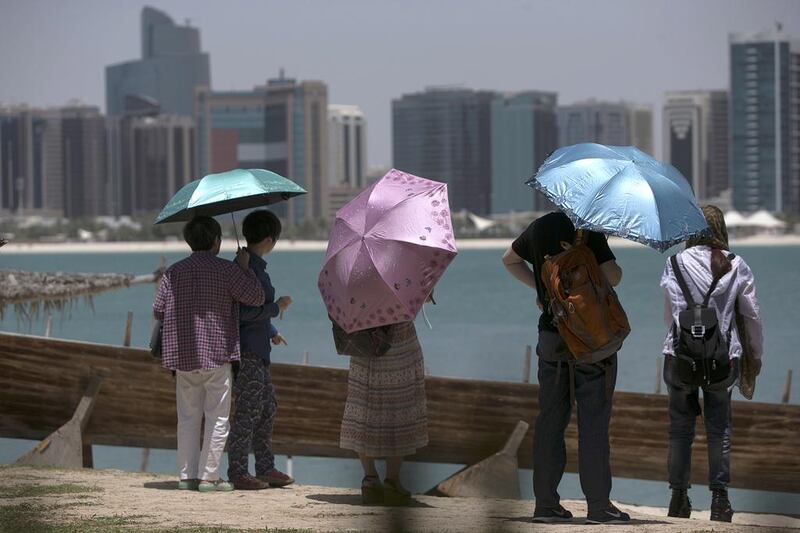Nearly 100,000 Chinese visitors flocked to Abu Dhabi in the first three months of 2017 as China surpassed India as the largest overseas source of visitors to the emirate.
According to Abu Dhabi’s Tourism & Culture Authority, new visa-on-arrival regulations introduced last year resulted in the number of Chinese tourists staying in Abu Dhabi hotels increasing by 48 per cent to 138,747.
The visa rules were likewise eased for Russians earlier this year, and in the first quarter the number of Russian visitors staying in Abu Dhabi hotels increased 41 per cent to 48,207.
However, the TCA said that despite the surge in Chinese and Russian visitors, total numbers of hotel guests in Abu Dhabi increased just 4 per cent in the first three months of the year compared with a year earlier as other key source markets were hit by currency fluctuations.
The strength of the US dollar, to which the dirham is pegged, has made it more expensive for visitors from the UK and Europe to come to the Emirates. Further, Indian tourists have been hit by demonetisation.
“We welcome this increase as we continue to pursue our target of attracting 4.9 million visitors by the end of 2017,” said the TCA director general Saif Saeed Ghobash.
“We are particularly pleased to see the immediate benefits of the relaxed visa requirements across the Chinese and Russian tourism markets, with nationals from both countries now being granted visas upon arrival at Abu Dhabi International Airport.”
The news came as Abu Dhabi airport reported that the number of passengers travelling through the airport in the first three months of 2017 grew by just 1.8 per cent compared with the same period a year earlier.
About 6.15 million passengers passed through in the first three months of 2017, up from 6.04 million a year earlier.
According to Abu Dhabi Airports figures, the year-on-year growth in passenger numbers has slowed from 9.5 per cent reported in the first quarter of 2016 and 21.1 per cent reported in Q1 2015.
The news comes as Middle East air travel has been hit by economic slowdown caused by low oil prices as well as dwindling growth in key international markets such as Europe.
It also comes as UAE airlines have been hit by a move by the US to ban laptops and other personal electronics in carry on luggage on US bound flights.
The airport operator said that the total number of passengers travelling through Abu Dhabi International, the home of Etihad Airways, in the month of March – the first month that the US laptop ban came into effect – stood at 2.03 million, an increase of just 0.3 per cent compared with March 2016.
“The impact of US flight restrictions has clearly impacted demand as well as that from Etihad’s equity partners that also fly to the US,” said Saj Ahmad, chief analyst at StrategicAero Research.
“It’s not a trend by any means – but if the second quarter doesn’t show improvement, perhaps then we can start worrying.”
Last Wednesday, Dubai-based Emirates said that it was cutting some flights to the US because of a drop in demand caused by the new security measures and Mr Trump’s attempts to ban travellers from some Muslim-majority nations.
lbarnard@thenational.ae
Follow The National's Business section on Twitter






